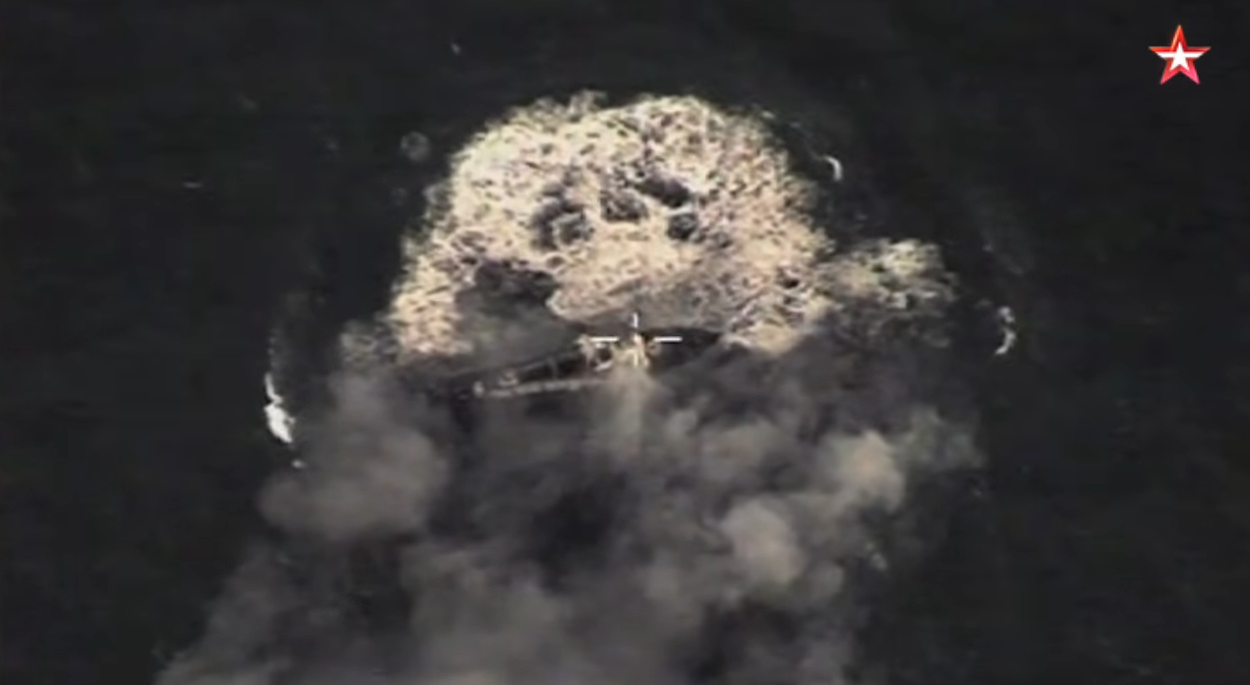The success of the offensive in Kharkov is valuable for Ukraine on many levels. It was needed not only by the government in Kiev, soldiers in the trenches and millions of Ukrainians. This success was also craved by the world, supporting and keeping its fingers crossed for Ukraine – writes Mariusz Marszałkowski, editor at BiznesAlert.pl.
BiznesAlert.pl has been following the so-called „Special Military Operation” in Ukraine that started with a speech given by Vladimir Putin at 4: 00 a.m. on February 24, 2022. Even before the war in Ukraine actually started we took to predicting the possible scenarios and how the Russian invasion would unfold. Today, more than half a year after the start of the war, we can say that the forecasts and estimates turned out to be correct. The Russian army, despite its overwhelming superiority both on land, at sea and in the air, was not able to achieve even its minimum goals, which was the complete seizure of the Donetsk and Lugansk regions. It failed to capture Kiev and replace the pro-Western leaders with president Volodymyr Zelensky at the helm. The only relative success, which as it later turned out was possible mostly because of lack of loyalty and betrayal on the part of some of Ukraine’s security apparatus, was the capture of a portion of the Kherson region with its capital city, as well as part of the Zaporizhzhia region, which allowed the occupant’s army to „carve out” an onshore corridor that connects continental Russia with Crimea, which it occupies since 2014.
For several months Kherson and the area to the east of the Dnieper have been closely monitored by military commentators, analysts and experts from all over the world as the possible game changer in the conflict. This was due to the fact that the authorities in Kiev repeatedly declared the imminent start of a counteroffensive, which was supposed not only to recapture the city of Kherson, but also to restore the border of state control at least at the level before February 24. The offensive of the Ukrainian troops on Kherson had its own life in the media, a projection of many wishes of either side of the conflict.
The offensive operations themselves actually lasted from April, when the threat of the landing at Odessa disappeared after the sinking of the missile cruiser of the Black Sea fleet „Moscow”, and after the garrison aimed at defending the beaches of Odessa from the sea landing was sent to defend Nikolayev and further stabilize the front in the Kherson section.
Since then, occasionally one and the other side led the so-called reconnaissance by combat, that is, attacks on selected sections of the front in small groups (usually with the strength of a platoon / company) in order to test the enemy’s ability to defend in a given section. The first serious counteroffensive of the Ukrainian forces in the direction of Kherson began in June. After initial successes and reaching the city of Kherson at a distance of 15-20 km, the Russian forces conducted their counteroffensive, which repelled the Ukrainian attack and pushed back the Ukrainian forces to a distance of 30-40 km from the city itself. In mid-July, president Zelensky instructed the Minister of Defense, and the armed forces „to recapture the south of Ukraine”. Since mid-July intensified missile attacks have begun, using the modern systems HIMARS and MLRS M270 supplied by the United States, Britain and Germany. Command posts, ammunition depots, areas of troop concentrations, logistics hubs and positions of air defense systems were put on the target list. The Ukrainians also successfully bombed bridges and road and rail crossings over the Dnieper river, including the Antonov bridge near Kherson, as well as bridges in Novaya Kakhovka. These attacks proved so effective that the Russians were forced to transport people, supplies and equipment using barges and pontoon bridges, which again and again became the target of missile attacks. Ukrainian politicians frequently informed about the planned great counteroffensive, which was supposed to break the Russian defensive lines and push the Russian troops beyond the right-bank Dnieper.
The actual attack on the Russian position occurred on August 29, when on several sections of the southern front the Ukrainian troops launched attacks on Russian positions. There was no frontal breach. The Russians over the past six months have managed to build numerous fortifications and dig in on the occupied positions. In addition, despite the logistical problems and underwhelming coordination, the Russians, who are constantly under fire, have air support to the tune of 200 flights a day (number of support operations). It is possible that one machine per day performs three to five missions.
The recapture of Kherson and the right bank of the Dnieper has not only a symbolic dimension – Kherson is the first, and so far, the only regional city (except for Luhansk and Donetsk lost in 2014) occupied by the Russians during the „special military operation”. The clearance of this area is also important for military reasons. The Russian bridgehead on the right bank of the Dnieper still causes a (now – illusory) threat to further offensive actions, for example, in the direction of Kryvyi Rih. In addition, the location of the Russians allows them to continuously carry out missile attacks on Mykolaiv. Pushing the invaders beyond the right bank of the Dnieper will push away the threat of attacks with multi-guide missile launchers such as the BM-30 Smiercz and BM-27 Uragan, which regularly attack the capitals of the Nikolaev region with, among others, cluster munitions.
It is difficult to say exactly how many towns were liberated from the Russian occupation, because the front is very dynamic. The two sides often fight over villages, 90 percent of which have been destroyed as a result of, among others, artillery fire from one side or the other. Also, the Ukrainians themselves are reluctant to report on their progress. The media was put on an information blockade, so as not to expose the actions. This is due to the fact that the situation on the front often changes. A town recaptured today could fall back into enemy hands tomorrow. It was assumed that the Ukrainian general staff informs about the recovery of a village, only after the front has normalized and stabilized.
However, the offensive on Kherson had one more important aspect, which the Russians themselves saw, but looking at the results, it did not help them much.
Already at the end of August, shortly after the start of the Ukrainian counteroffensive in Kherson region, some pro-Russian Telegram channels, possibly linked to Russian intelligence, warned that the Kherson operation might be intended to cover up preparations for a larger operation in the Kharkiv region. According to those warnings, in the past few days Ukrainian troops have intensified artillery attacks on Russian troops stationed near, among others, Balakliya, on the Kharkov front. In addition, Russian military intelligence observed the concentration of military equipment and Ukrainian sub-units in the vicinity of the demarcation line. The „telegramists” even pointed to the potential directions of the attack of the Ukrainian army, which may tragically end for the Russian troops.
There really was something to worry about. The front on the Balakliya, Kupiansk, Izium section is manned almost exclusively by soldiers and rear officers. Those units included the mobilized (often under duress) residents of the Donetsk and Luhansk Oblasts, Rosgvardia troops, including special units of the so-called SOBR (anti-terrorist units of the Russian police), sub-divisions of artillery, logistics and engineering troops, plus small subsections of tanks and armored personnel carriers. Russians’ darkest nightmares came true on September 6, when Ukrainian troops launched an assault towards Balakliya. Many commentators called the Ukrainian offensive a blitzkrieg, as the pace of the Ukrainian attack was impressive. In the first 48 hours after the start of the assault, forposts of Ukrainian troops reached the river Sieverski Donetsk, after which they split into two additional directions. They went to the north towards Kupiansk and to the south, towards Izium.
An unofficial code name of the operation emerged in the Ukrainian infospehre. It was named Fridericus II.
Fridericus is the name of the German offensive operation in the area of Barvinkove-Izium conducted in May 1942. The German troops, carrying out an attack from the side of Chuchuev from the north and Slavia from the south, encircled the Soviet troops of the 9th Army. This operation was a great success of the Axis powers.
After less than a week, Ukrainian troops took over Izium, a strategic point for the attack on Slavyansk, as well as Kupiansk, which is an important logistics point. The city has a railway junction, thanks to which the Russian troops in Kharkov region were supplied with ammunition, food and fuel. The Russians, as a result of the defeat at Izium, also withdrew from the occupied northern part of the Kharkov region, thanks to which the Ukrainian troops regained control of their state border.
However, the Ukrainians failed to encircle the Russian troops. A large part of the Russian soldiers managed to escape before the Ukrainian troops closed the encirclement. However, the fleeing Russians abandoned huge amounts of equipment, including tanks, artillery, armored personnel carriers, command vehicles and a large amount of ammunition.
According to photos of the losses, the Russians lost 533 units of equipment, which is equivalent to the equipment of at least a division. A large part of the abandoned equipment was seized by the Ukrainians.
Russian losses in the Ukrainian offensive in Kharkov region up to 17 September. WarSpotting.net
Thanks to the Kharkov offensive, the Ukrainians dismissed the threat of artillery shelling of Kharkov and regained control over part of the state border and reduced military pressure on Slavyansk from the north. In addition, they disorganized Russian plans for further offensives and significantly weakened the combat potential of the Russian army. Fighting continues for more towns, this time in the Luhansk region, where Ukrainian troops are closing in on Lyman, lysychansk and Sievierodonetsk – a city that has been on the defensive for more than a month, often referred to as „little Mariupol” because of the level of Russian losses and the scale of destruction.
Was Kherson a „maskirovka”?
The success in Kharkiv overshadowed discussions about Kherson and the southern counteroffensive. There were voices that the whole operation in Kherson region was a disguise of the Ukrainians in order to draw as many Russian troops into the region as possible, and at the same time weaken the Russian offensive on Bahmut and the front in Kharkov region. According to information obtained by the Wall Street Journal, this is not the case. The Ukrainians, according to plan, have prepared two parallel offensives. While the success of the operation in Kharkov surprised even Ukrainians, the one in the south was planned as a long-term and intricate operation. It is worth noting that, according to estimates of the Ukrainian intelligence, at the front near Kherson there are about 30 thousand Russian soldiers. Despite the lack of supplies and weak command, it is still a force capable of long-term defense.
Success in the south is as necessary as it is in the Kharkiv region. The arrival of winter can hamper offensive operations, and Russia can use this time to lick wounds and launch attacks in the spring. The more Ukrainians will be able to recover before mud and snow appear, the more comfortable will be their position in 2023.
The success of the offensive in Kharkov was also necessary for the hearts and souls of Ukrainian soldiers. It showed that the Russians can be defeated when attacked. The liberation of the Kharkov region is also an important signal for Western governments and societies. It shows that military aid to Ukraine as well as sacrifice related to high energy prices have advantages, which are undoubtedly the success of the Ukrainians in the fight against the Russian occupier.









